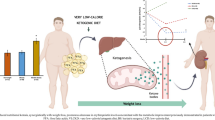Abstract
Harris lines represent episodes of growth arrest followed by recovery, thus reflecting episodes of mismatched imbalance between energy intake and energy expenditure. Consumption of ethanol during the growth period — formerly extended in our wine-producing rural areas- may lead to such a situation, due at least in part to the energy-wasteful MEOS-linked ethanol metabolism. Based on these facts, in the present study we have analysed the relationship between ethanol intake during growth period and the presence of Harris lines in the right tibia in 100 consecutive adult patients admitted to our hospitalization unit. Early ethanol consumption was strongly related with the presence of two or more, and three or more Harris lines, so that ethanol consumption should be considered in the differential diagnosis of Harris lines, and conversely, the presence of Harris lines point to ethanol consumption during growth period. This association was independent from coexisting starvation and/or illness.
Similar content being viewed by others
References
Clarke S.K., 1982.The association of early childhood enamel hypoplasias and radiopaque transverse lines in a culturally diverse prehistoric skeletal sample. Human Biology, 54: 77–84.
Lieber C.S., 1989.Toxic and metabolic changes induced by ethanol.In Alcoholism. Biomedical and genetic aspects, Goedde H.W. & Argawall D.H. (eds.) Pergamon, New York, pp. 57–83.
Lieber C.S., 1977.Metabolism of Ethanol.In “Metabolic aspects of Alcoholism,” Lieber C.S. ed., pp. 1–29. MTP Press, Lancaster.
Lieber C.S., Jones D.P. & De Carli L.M., 1965.Effects of prolonged ethanol intake: production of fatty liver despite adequate diets. J. Clin. Invest., 44: 1009–1020.
Martin D.L., Goodman A.H. & Armelagos G.J., 1985.Skeletal pathologies as indicators of quality and quantity of diet. In Gilbert R. & Mielke J.H. (eds).The analysis of prehistoric diets, pp. 227–279. Academic Press, Orlando (Fda).
Park E.A., 1964.Imprinting of nutritional disturbances on growing bone. Pediatrics 33:915–982.
Pirola R. & Lieber, C.S., 1976.Hypothesis: energy wastage in alcoholism and drug abuse: possible role of hepatic microsomal enzymes. Am. J. Clin. Nutr., 29: 90–93.
Tejera J., Santolaria F., Gonzales-Reimers E., Batista N., Jorge J. & Hernandez-Nieto L., 1991.Alcoholism, 26: 361–366.
Wing E.S. & Brown A.E., 1979.Paleonutrition. Academic Press, Orlando (Fda).
Author information
Authors and Affiliations
Rights and permissions
About this article
Cite this article
González-Reimers, E., Santolaria-Fernández, F., Moreno-García, A. et al. Harris lines and ethanol consumption during growth period. Int. J. Anthropol. 8, 21–25 (1993). https://doi.org/10.1007/BF02447639
Received:
Accepted:
Issue Date:
DOI: https://doi.org/10.1007/BF02447639




